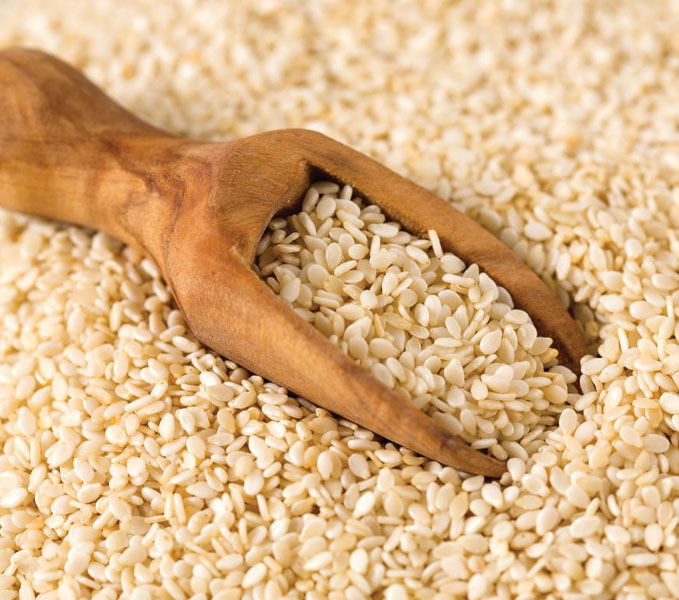Sesame Seeds

Sesame Seeds
Arabic -الفولحبوب السمسم
Dutch – Sesam zaden
Russian – Семена кунжута
Spanish – Semillas de sésamo
Description:
Sesame seeds are tiny, flat oval seeds with a nutty taste and a delicate, almost invisible crunch. They come in a host of different colors, depending upon the variety, including white, yellow, black and red.
Sesame seeds are highly valued for their high content of sesame oil, an oil that is very resistant to rancidity. Sesame seeds are the main ingredients in both tahini and the Middle Eastern sweet treat, halvah.
India is one of the five major producers and exporters of Sesame Seeds. The variety of sesame seeds cultivated in India includes red, white, brown and black. Gujarat is one of the leading sesame seeds cultivators. Our suppliers include efficient farmers of sesame seeds from Gujarat.
Around 60-65 countries of the world produce sesame seed. Asian and African countries are the major producers of Sesame. The top five producers account for around 70% of the production. China, India, Sudan, Myanmar, Uganda, Nigeria, Bangladesh, Pakistan, Tanzania, Mexico, Thailand and Egypt, in that order of rank, are the top-twelve producers of this seed.
The global Sesame exports are estimated to be around 5 to 6 lakh tons. India, China, Mexico are the major Sesame exporters, while Japan is the single largest buyer of sesame seeds in the world. The country imported 164 thousand tones of seeds in 2000. The second largest importer is Egypt. Her imports in 2000 totaled 85.9 thousand tons.
South Korea and USA rank third and fourth respectively, with imports in 2000 equal to 70 thousand tons and over 49 thousand tons. Fifth in the world, the Netherlands is the largest buyer in Europe. It imported 32.33 thousand tons in 2000. Other major importers include China (39.5 thousand tons), Syria (29.9 thousand tons), Saudi Arabia (20 thousand tons), Greece (19.30 thousand tons), Israel (18.6 thousand tons), Mexico (17.5 thousand tons) and Germany (17.3 thousand tons).
India produces a wide variety of Sesame seeds varying in color from white to red to black, with oil content varying from 40 to 50 %. The white and black Indian Sesame seeds are mainly used for direct consumption by its addition in several foods and for exports. The brown Indian Sesame seeds are mainly used for oil extraction. These have oil content of around 45-50 %. The white Indian Sesame seeds have the desirable nutty taste and are used for making sweets, baked foods and confectioneries. The black Indian Sesame seeds are used for seasoning and for fries. Hulled seeds are also used for snack preparation.
Around 80 % of the sesame seed production in India, happens during the khariff season (June-July to September-October), with the crop starting to arrive from September. The remaining crop is cultivated in the rabi season (December to March), with the crop starting to arrive from March.
Sesame seed is largely cultivated in the western and eastern parts of the country. The major producers of Indian Sesame are Gujarat, West Bengal, Tamil Nadu, Andhra Pradesh, Madhya Pradesh and Maharashtra. Rajasthan is also a major producer, when the area receives sufficient rains.
Specification
| Purity | 99%, 98%, 99.50% (Singapore/Europe) |
| Total ASH | 9.50% Max |
| Acid insuluble | 1.75% Max |
| ASH Flavour | Aromatic with a Penetrating Flavor |
| Moisture | 10% Max |
| Salmonella | Absent/25 gms |
| Moisture | 8% Max |
| Salmonella | Absent/25 gms |
| Volaile Oil | Min 2.00 ml/100 gms |
| Packing | 15, 25, 40 Kg PP Bags |
| Type | Machine cleaned / Sortexed / Extra Bold |

